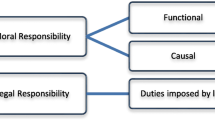Abstract
In this study it’s aimed to determine the relationship between efficiency of justice service and salaries of judges in European countries with two-stage Data Envelopment Analysis (DEA). Data used in this study are taken from European Judicial System report published by The European Commission for the Efficiency of Justice. In this study two stage DEA is used. In the first stage, the efficiency of justice service is measured by data envelopment analysis. In the second stage, the results obtained from DEA are regressed with variables affecting the courts by Tobit regression model. In the DEA analysis while number of judges and office staff are used as inputs, resolved cases are used as outputs. In the Tobit regression model while the results obtained from DEA are used as dependent variable, judge salaries, judges’ basic education and number of courts are used as explanatory variables. According to Tobit regression model, it’s found that there is a positive and significant relation between efficiency of justice service and salaries of judges in European countries. The increase in judge salaries is significant for the efficiency of courts, but it certainly is not only solution for the efficiency of justice services.

Similar content being viewed by others
References
Afonso, A., & Aubyn, M. (2006). Cross-efficiency of secondary education provision: A semi-parametric analysis with non-discretionary inputs. Economic Modelling, 23, 476–491.
Albers, P. (2003). Evaluating judicial systems: “A balance between variety and generalisation”, Commission for the efficiency of justice (CEPEJ) council of Europe, 12.
Alfonso, A., Shucknecht, L., & Tanzi, V. (2006). Public sector efficiency: Evidence for new EU member states and emerging markets, European Central Bank working paper series, no. 581.
Aubyn, M. (2008). Law and order measurement—A literature review. ISEG-UTL economics working paper, no: 19/2008/DE/CISEP/UECE. Retrieved from http://ssrn.com/abstract=1162120.
Banker, R. D., Charnes, A., & Cooper, W. W. (1984). Some models for estimating technical and scale inefficiencies in data envelopment analysis. Management Science, 30, 1078–1092.
Bhat, R., Verma, B. B., & Reuben, E. (2001). Data envelopment analysis (DEA). Journal of Health Management, 3, 309–322.
Buscaglia, E., & Dakolias, M. (1999). Comparative ınternational study of court performance ındicators: A descriptive and analytical account. Washington, DC: The World Bank.
Buscaglia, E., & Ulen, T. (1997). A Quantitative assessment of the efficiency of the judicial sector in Latin America. International Review of Law and Economics, 17, 275–291.
Castro, A. (2009). Court performance in Brazil: Evidence from judicature-level data. Midwest Political Science Association 67th Annual National Conference, The Palmer House Hilton, Chicago.
CEPEJ. (2008). European judicial system edition 2008 (data 2006) efficiency and quality of justice. Belgium: CEPEJ.
Chaparro, P. F., & Jimenez, S. J. (1996). An assessment of the efficiency of Spanish courts using DEA. Applied Economics, 28, 1391–1403.
Charnes, A., Cooper, W. W., Lewin, A. Y., & Seiford, L. M. (1994). Data envelopment analysis: Theory, methodology and application. Boston: Kluwer Academic Publishers.
Cook, W. D., & Seiford, L. M. (2008). Data envelopment analysis (DEA)–Thirty years on. European Journal of Operational Research, 192, 1–17.
Dakolias, M. (1999). Court performance around the world: A comparative perspective. Washington, DC: The World Bank.
Dam, K. V. (2006). The judiciary and economic development. John M. Olin & economics working paper, 287.
Gorman, M., & Ruggiero, J. (2009). Evaluating US judicial district prosecutor performance using DEA: Are disadvantaged counties more inefficient? European Journal of Law and Economics, 27, 275–283.
Gujarati, D. N. (2004). Econometrics (4th ed.). Boston: The McGraw–Hill Companies.
Hagstedt, K., & Proos, J. (2008). Has the recent restructuring of Swedish district courts ımproved efficiency?. Uppsala University, Department of Economics: Spring.
Kittelsen, S. A. C., & Førsund, F. R. (1992). Efficiency analysis of Norwegian district courts. The Journal of Productivity Analysis, 3, 277–306.
Lederer, F. (2006). E-Mahkeme. Ankara Bar Association Assembly of Law, Bilkent Otel Ankara, 4, 102–110.
Lewin, A. L., Morey, R. C., & Cook, T. C. (1982). Evaluating theadministrative efficiency of courts. Omega, 10, 401–411.
Özkorkurt, N. Ü. (2008). Yargı Bağımsızlığı Açısından Osmanlı’da ve Günümüz Türkiyesi’nde Yargıya Genel Bir Bakış. Ankara Üniversitesi Hukuk Fakültesi Dergisi, 57(1), 225–242.
Pekcanitez, H., Atalay, O., & Özekes, M., (2008). Medeni Usul Hukuku, Yetkin Yayınları, Ankara.
Rosales-Lopez, V. (2008). Economics of court performance: An emprical analysis. European Journal of Law and Economics, 25, 231–251.
Schneider, M. R. (2005). Judicial career ıncentives and court performance: An Empirical study of the German labour courts of appeal. European Journal of Law and Economics, 20, 127–144.
Simar, L., & Wilson, P. W. (2007). Estimation and inference in two-stage, semi-parametric models of production processes. Journal of Econometrics, 136, 321–364.
Soares, Y., & Sviatschi, M. M. (2010). The ımpact of modernization of justice on court efficiency in Costa Rica, Inter-American Development Bank Washington.
Sousa, M. C. S., & Schwengber, S. B. (2005). Efficiency Estimates for Judicial Services in Brazil: Nonparametric FDH and the Expected Ordem-M Efficiency Scores for Rio Grande doSul Courts, Encontro da ANPEC 2005.
Tanrıver, S. (2000). Hukuk Yargısında Etkinliğin Sağlanması. Ankara Üniversitesi Hukuk Fakültesi Dergisi, 49, 67–83.
Tarım, A. (2001). Veri Zarflama Analizi Matematiksel Programlama Tabanlı Göreli Etkinlik Yaklaşımı. Ankara: Sayıştay Yayınları.
Tulkens, H. (1993). On FDH efficiency analysis: Some methodological ıssues and applications to retail banking, court, and urban transit. The Journal of Productivity Analysis, 4, 183–210.
TÜSİAD. (1998). Yargımla Düzeninde Kalite. İstanbul: Lebib Yalkın Yayınları.
Yeung, L. L., & Azevedo, P. F. (2011). Measuring efficiency of Brazilian courts with data envelopment analysis (DEA). IMA Journal of Management Mathematics. doi:10.1093/imaman/dpr002.
Yeung, L. L., & Azevedo, P. F. (2011). Measuring efficiency of Brazilian courts with data envelopment analysis (DEA). IMA Journal of Management Mathematics.
Yücel, M. T. (2008). Türkiye’de Yargının Etkinliği. Ankara: Türkiye Barolar Birliği.
Author information
Authors and Affiliations
Corresponding author
Rights and permissions
About this article
Cite this article
Deyneli, F. Analysis of relationship between efficiency of justice services and salaries of judges with two-stage DEA method. Eur J Law Econ 34, 477–493 (2012). https://doi.org/10.1007/s10657-011-9258-3
Published:
Issue Date:
DOI: https://doi.org/10.1007/s10657-011-9258-3




